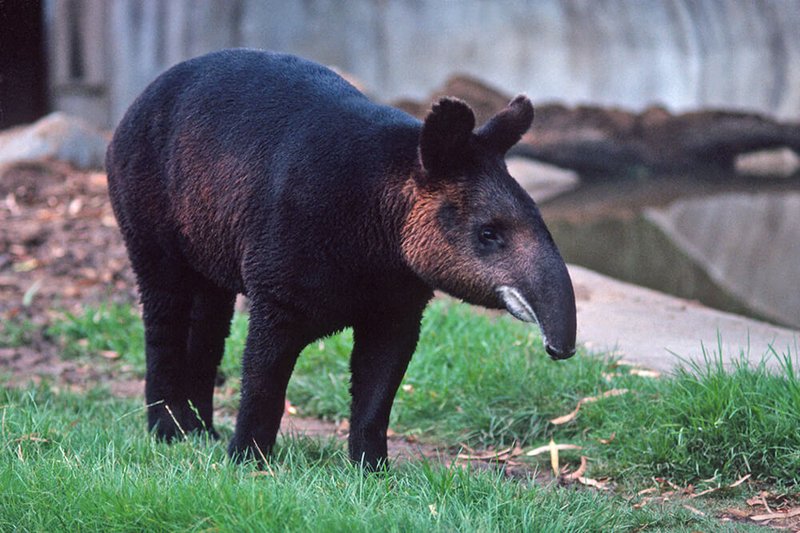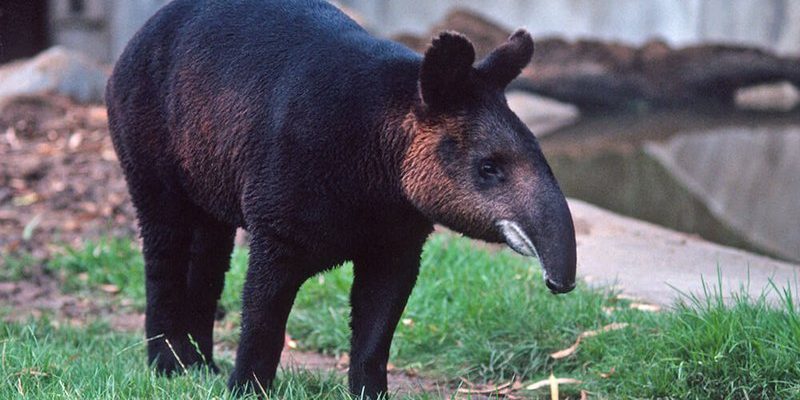
Let’s dive deeper into how this unique creature contributes to the delicate balance of its habitat. They’re not just wandering around looking adorable; they have important jobs that affect many other species and the health of the environment. Here’s the thing: understanding the mountain tapir’s role helps us appreciate the intricate web of life in which it plays a part, and why protecting such species is essential.
What Is a Mountain Tapir?
Before we explore the mountain tapir’s role, it’s important to know what this animal is all about. The mountain tapir, also known as the *Tapirus pinchaque*, is one of the four species of tapirs. These creatures are relatively small, weighing around 500 pounds, and have a distinctive wooly coat that helps them adapt to cooler mountain climates. Found mainly in the Andes of Colombia, Ecuador, and northern Peru, they prefer cloud forests and grasslands where they can munch on plants.
Mountain tapirs are herbivores, which means their diet consists of a variety of leaves, fruits, and bark. But here’s something that might surprise you: they can eat up to 50 different types of plants in one day! This diverse diet makes them a crucial part of their ecosystem.
The Mountain Tapir as a Seed Disperser
One of the main roles of the mountain tapir in its ecosystem is that of a seed disperser. When they munch on fruits and leaves, they often swallow seeds whole. After some time, these seeds are expelled back into the environment through their droppings. You might be wondering why this is important. Well, it helps with the growth of new plants!
Here’s a little story: imagine a mountain tapir happily snacking on a delicious fruit. Later, as it travels through the forest, it drops those seeds in different locations. This action aids in seed germination and promotes plant diversity. In simple terms, it’s like planting little trees wherever they go!
Impact on Plant Communities
The mountain tapir’s feeding habits influence the composition of plant communities. They tend to prefer certain plants over others, which can shape the ecosystem. For example, by selectively eating specific types of vegetation, they can control which plants thrive and which ones struggle.
More plant diversity leads to a healthier ecosystem. When various plants grow together, they create a more stable environment that supports various wildlife species, including insects, birds, and even larger animals. In essence, by eating and spreading seeds, mountain tapirs help maintain the balance between different species in their habitat.
Providing Food for Other Wildlife
Mountain tapirs don’t just nurture plants; they also provide a food source for other animals. Their droppings are packed with nutrients and act as a delicious meal for different organisms, from insects to larger creatures like birds. Think of them as an all-you-can-eat buffet for local wildlife!
Additionally, some predators may prey upon mountain tapirs. While this may sound harsh, it’s part of the natural cycle of life. By preying on tapirs, these predators help control tapir populations, which ultimately keeps the ecosystem balanced. This interconnectedness shows that each species, including the mountain tapir, plays a part in the overall health of the environment.
The Role in Soil Health
Another significant impact mountain tapirs have is on soil health. When they roam and forage through the forest, their movements aerate the soil. This process helps water seep into the ground and promotes nutrient cycling, making the soil richer. Furthermore, as they graze, they help trim plant growth, making room for diverse flora to thrive.
Healthy soil is vital for plant growth and can even help with water retention. In a region as sensitive to climate changes as the Andes, this aspect is crucial. If soil health declines, it can lead to erosion and negatively impact the entire ecosystem.
The Threats Facing Mountain Tapirs
With all their valuable contributions, it’s heartbreaking to note that mountain tapirs face various threats. Habitat destruction, caused by deforestation and agriculture, is one of the most significant issues. When their homes disappear, so do their roles in the ecosystem.
Additionally, poaching poses a risk to their populations. Despite their importance, many still see mountain tapirs as easy targets due to their size and visibility. Conservation efforts are vital to protect these incredible creatures and, by extension, the ecosystems they support.
Conservation Efforts and Their Importance
Conservation initiatives are crucial for the survival of the mountain tapir. Organizations work to create protected areas that preserve their habitats, while also educating local communities about their importance. By raising awareness, these efforts encourage people to engage positively with their environment.
You may be wondering how you can help. Supporting wildlife conservation organizations or participating in local environmental efforts can contribute to preserving habitats not just for mountain tapirs, but for countless other species. Every little action can create a ripple effect, leading to healthier ecosystems.
The mountain tapir may look like just another adorable animal in the Andes, but its role in the ecosystem is much more profound. From acting as a seed disperser to affecting soil health, these creatures keep the balance in their mountainous habitat. Understanding this helps highlight the interconnectedness of all living things.
As we face challenges like climate change and habitat destruction, protecting the mountain tapir is essential—not just for them, but for the entire ecosystem they support. So next time you think of tapirs, remember the incredible work they do as stewards of their land. By supporting conservation efforts, we can help ensure that these vital roles continue for generations to come.

